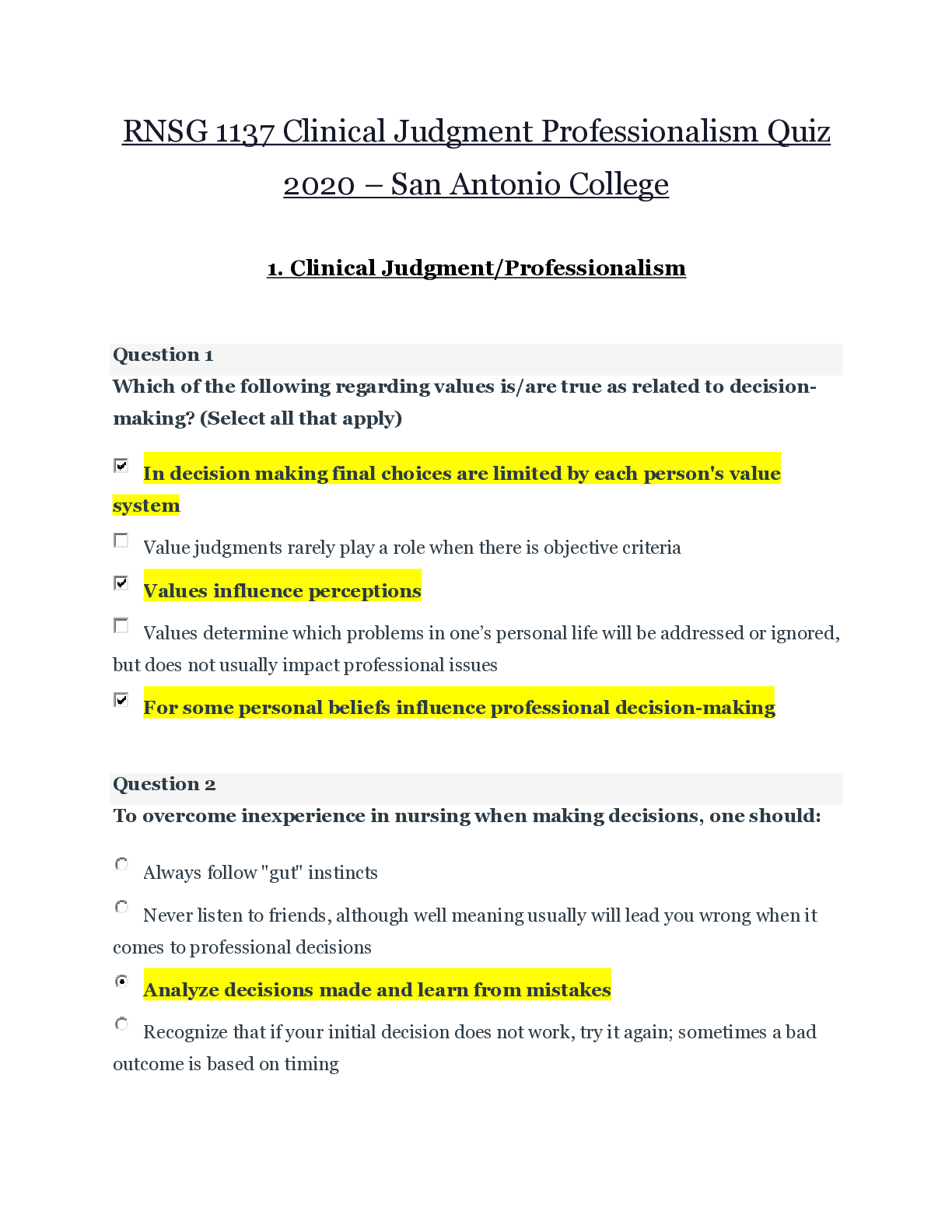*NURSING > EXAM > RNSG 1430 Health Care Concepts I Study Guide for Final Exam – San Antonio College/ Verified Answer (All)
RNSG 1430 Health Care Concepts I Study Guide for Final Exam – San Antonio College/ Verified Answers.
Document Content and Description Below
RNSG 1430 Health Care Concepts I Study Guide for Final Exam – San Antonio College 50 Question Final A. Sleep (4) Taylor chapter 33 1. Sleep deprivation - a decrease in the amount, consistency, or qu... ality of sleep. It may result from decreased REM sleep or NREM sleep. Total sleep deprivation is rarely seen, other than in experimental settings. There are many causes, and the manifestations progress from irritability and impaired mental abilities to a total disintegration of personality. In general, the effects of sleep deprivation become increasingly apparent after 30 hours of continuous wakefulness. The most recent classification of sleep disorders categorized by the International Classification of Sleep Disorders includes four major categories of disturbances: ● Dyssomnias ● Parasomnias ● Sleep disorders associated with medical or psychiatric disorders ● Other proposed disorders Dyssomnias include Insomnia - characterized by difficulty falling asleep, intermittent sleep, or early awakening from sleep. It is the most common of all sleep disorders. Hypersomnia is a condition characterized by excessive sleep, particularly during the day. This disorder is also referred to as idiopathic hypersomnia and is a debilitating condition. A person may fall asleep for intervals during work, while eating, or even during conversations Narcolepsy - a condition characterized by an uncontrollable desire to sleep. A person with narcolepsy can literally fall asleep standing up, while driving a car, in the middle of a conversation, or while swimming. Sleep apnea, generally referred to as sleep-disordered breathing (SDB), is a condition in which a person experiences the absence of breathing (apnea) or diminished breathing efforts (hypopnea) during sleep between snoring intervals. Restless leg syndrome (RLS) is a common sleep disorder that affects up to 15% of the population, most often middle-aged and older adults. People with restless leg syndrome (RLS) cannot lie still and report unpleasant creeping, crawling, or tingling sensations in the legs. B. Parasomnias - patterns of waking behavior that appear during REM or NREM stages of sleep. They are more commonly seen in children. Although parasomnias are commonly outgrown before adulthood, safety and prevention of injury are paramount concerns. i. Somnambulism or sleepwalking may range from sitting up in bed to walking around the room or the house to walking outside the house. The sleepwalker is unaware of his environment. ii. Bruxism - grinding of one’s teeth and frequently is an indicator of stress. iii. Enuresis - urinating during sleep or bedwetting. 2. REM/NON-REM a. NREM sleep (comprising about 75% of total sleep) consists of four stages. Stages I and II, consuming about 5% and 50% of a person’s sleep time, respectively, are light-sleep states. During these stages, the person can be aroused with relative ease. Stages III and IV, each representing about 10% of total sleep time, are deep-sleep states, termed delta sleep or slow-wave sleep. The arousal threshold (intensity of stimulus required to awaken) is usually greatest in stage IV NREM. Throughout the stages of NREM sleep, the parasympathetic nervous system dominates, and decreases in pulse, respiratory rate, blood pressure, metabolic rate, and body temperature are observed. b. It is more difficult to arouse a person during REM sleep than during NREM sleep. In normal adults, the REM state consumes 20% to 25% of a person’s nightly sleep time. People who are awakened during the REM state almost always report that they have been dreaming. They can usually vividly recall their dreams even if they were absurd or have no sensible meaning for them. Everyone dreams. During REM sleep, the pulse, respiratory rate, blood pressure, metabolic rate, and body temperature increase, whereas general skeletal muscle tone and deep tendon reflexes are depressed. REM sleep is believed to be essential to mental and emotional equilibrium and to play a role in learning, memory, and adaptation. 3. Interventions to promote sleep a. Follow a regular routine for bedtime and morning awakening. b. Accept individual differences in need for sleep. c. Use relaxation exercises to relax before bedtime, especially if feeling stressed. d. Avoid caffeine, smoking, and alcohol before bedtime. e. Adjust bed coverings, room temperature, and lighting to your preferences. f. Eat a small carbohydrate snack before going to bed. g. Be aware of the potential dangers of sleeping pills. h. Use some part of each day for quiet, enjoyable activities such as crafts, hobbies, and reading, watching television, listening to music, and visiting with friends. i. Incorporate three or four periods of regular exercise into each week. B. Comfort (4) Taylor chapter 34 4. Neurologic pain 5. Addiction/tolerance/dependence ● Addiction: a pattern of compulsive opioid use for means other than pain control. According to D’Arcy (2010a), the four characteristics that define addiction are a craving for the substance, compulsive use, lack of control over the drug, and continued use despite harm. ● Tolerance: occurs when the body becomes accustomed to the opioid and needs a larger dose each time for pain relief. The side effects diminish along with the pain relief. Tolerance does not indicate addiction. ● Dependence: a phenomenon in which the body physiologically becomes accustomed to long-term opioid therapy and suffers withdrawal symptoms if the opioid is suddenly removed or the dose is rapidly decreased. 6. Physiologic response ● vital signs ● skin color ● perspiration ● pupil size ● nausea ● muscle tension ● anxiety - - - - - - - - - - - - - - - - - - - E. Sensory (4) Brunner chapter 63 & 64 18. Cataracts- A cataract is a lens opacity or cloudiness Cataracts can develop in one or both eyes at any age and have a variety of risk factors. The three most common types of cataracts are defined by their location in the lens: nuclear, cortical, and posterior subcapsular. The extent of visual impairment depends on their size, density, and location in the lens. More than one type can be present in the eye. A nuclear cataract tends to have a substantial genetic component that causes a central opacity in the lens. It is associated with myopia (i.e., nearsightedness), which worsens when the cataract progresses. A cortical cataract involves the anterior, posterior, or equatorial cortex of the lens. Cortical cataracts progress at a highly variable rate. Vision is worse in very bright light. Sunlight exposure is a risk factor in cortical cataract formation. Posterior subcapsular cataracts occur in front of the posterior capsule. This type typically develops in younger people and is associated with prolonged corticosteroid use, diabetes, or ocular trauma. Near vision is diminished, and the eye is increasingly sensitive to glare from bright light. Caucasians are more likely to develop nuclear and posterior subcapsular cataracts, whereas cortical cataracts are more prevalent among African Americans. Glaucoma- The term glaucoma is used to refer to a group of ocular conditions characterized by optic nerve damage. Increased IOP damages the optic nerve and nerve fiber layer, but the degree of harm is highly variable (Porth & Matfin 2009). The optic nerve damage is related to the IOP caused by congestion of aqueous humor in the eye. A range of IOPs are considered “normal,” but these may also be associated with vision loss in some patients. TABLE 63-4 Glaucoma Types, Clinical Manifestation, and Treatment Types of Glaucoma Clinical Manifestations Treatment Open Angle Usually bilateral, but one eye may be more severely affected than the other. In all three types of open-angle glaucoma, the anterior chamber angle is open and appears normal. Primary openangle glaucoma (POAG) Optic nerve damage, visual field defects, IOP >21 mm Hg. May have fluctuating IOPs. Usually no symptoms, but possible ocular pain, headache, and halos. Decrease IOP 20%–50%. Additional topical and oral agents added as necessary. Normal tension glaucoma IOP ≤21 mm Hg. Optic nerve damage, visual field defects. If medical treatment is unsuccessful, LT can decrease IOP by 20%. Glaucoma filtering surgery if continued optic nerve damage despite medication therapy and LT. Ocular hypertension Elevated IOP. Possible ocular pain or headache. Treatment similar to POAG; however, the best management for normal tension glaucoma management is yet to be established. Goal is to lower the IOP by at least 30%. Angle Closure (Pupillary Block) Obstruction in aqueous humor outflow due to the complete or partial closure of the angle from the forward shift of the peripheral iris to the trabecula. The obstruction results in an increased IOP. Acute angle- closure glaucoma Rapidly progressive visual impairment, periocular pain, conjunctival hyperemia, and congestion. Pain may be associated with nausea, vomiting, bradycardia, and profuse sweating. Reduced central visual acuity, severely elevated IOP, corneal edema. Pupil is vertically oval, fixed in a semidilated position, and unreactive to light and accommodation. Ocular emergency; administration of hyperosmotics, acetazolamide, and topical ocular hypotensive agents, such as pilocarpine and beta-blockers (betaxolol). Possible laser incision in the iris (iridotomy) to release blocked aqueous and reduce IOP. Other eye is also treated with pilocarpine eye drops and/or surgical management to avoid a similar spontaneous attack. Subacute angleclosure glaucoma Transient blurring of vision, halos around lights; temporal headaches and/or ocular pain; pupil may be semidilated Prophylactic peripheral laser iridotomy. Can lead to acute or chronic angle-closure glaucoma if untreated. - - - - - - - - - - - - - - - - - - - - - - ● Attitudes toward seeking help from health care providers When caring for patients from a different culture, it is important to first ask how they want to be treated based on their values and beliefs. An effective way to identify specific factors that influence a patient’s behavior is to perform a cultural assessment. The primary informant should be the patient, if possible. If the patient is not able to respond to the questions, a family member or a friend can be consulted. Giger and Davidhizar (2002) model takes into account six cultural phenomena: communication, space, social organization, time, environmental control, and biological variations. The Campinha-Bacote Model of Cultural Competence (2011) emphasizes becoming culturally competent and integrating cultural awareness, cultural knowledge, cultural skill, cultural encounters, and cultural desire. You can also anticipate a patient’s cultural needs by obtaining this information through research before initiating contact with the patient. Remember, however, that information about any culture is general, and that it must be individualized for the specific patient once the actual interaction begins. 44. Cultural competence Taylor (81) Providing culturally competent nursing care means that care is planned and implemented in a way that is sensitive to the needs of individuals, families, and groups from diverse populations within society. Among the elements of cultural competence are: 1. Developing an awareness of one’s own existence, sensations, thoughts, and environment to prevent them from having an undue influence on those from other backgrounds 2. Demonstrating knowledge and understanding of the client’s culture, health-related needs, and culturally specific meanings of health and illness 3. Accepting and respecting cultural differences in a manner that facilitates the client’s and family’s abilities to make decisions to meet their needs and beliefs 4. Not assuming that the health care provider’s beliefs and values are the same as the client’s 5. Resisting judgmental attitudes such as “different is not as good” 6. Being open to and comfortable with cultural encounters 7. Accepting responsibility for one’s own education in cultural competence by attending conferences, reading professional literature, and observing cultural practices 45. Cultural sensitivity 46. Stereotype, bias, stigma Stereotyping- A cognitive component of an attitude toward a group. A belief generalized to all members of a group. Bias- prejudice in favor of or against one thing, person, or group compared with another, usually in a way considered to be unfair. stigma- a mark of disgrace associated with a particular circumstance, quality, or person. A. Human Development (5) Taylor chapter 18 47. Erikson, Piaget, Kohlberg, Maslow Maslows- Erikson 48. Developmental milestones 49. Denver developmental Directly administered tool; designed to screen expressive and receptive language, gross motor, fine motor and personal/social skills; results in risk category (normal, questionable, abnormal)• 0–6 years 50. Antecedents/attributes Attributes - Meet Developmental Milestones and Developmental Tasks - Appropriate for Developmental Age Antecedents - Normal Biological/Genetic Factors - Good Nutritional Status - Healthy Environment - Good Health Status **You are responsible for knowing concept analysis diagram content (i.e., attributes, antecedents, interrelated concepts, etc.) PowerPoints and nursing interventions for all concepts. [Show More]
Last updated: 1 year ago
Preview 1 out of 21 pages
Instant download
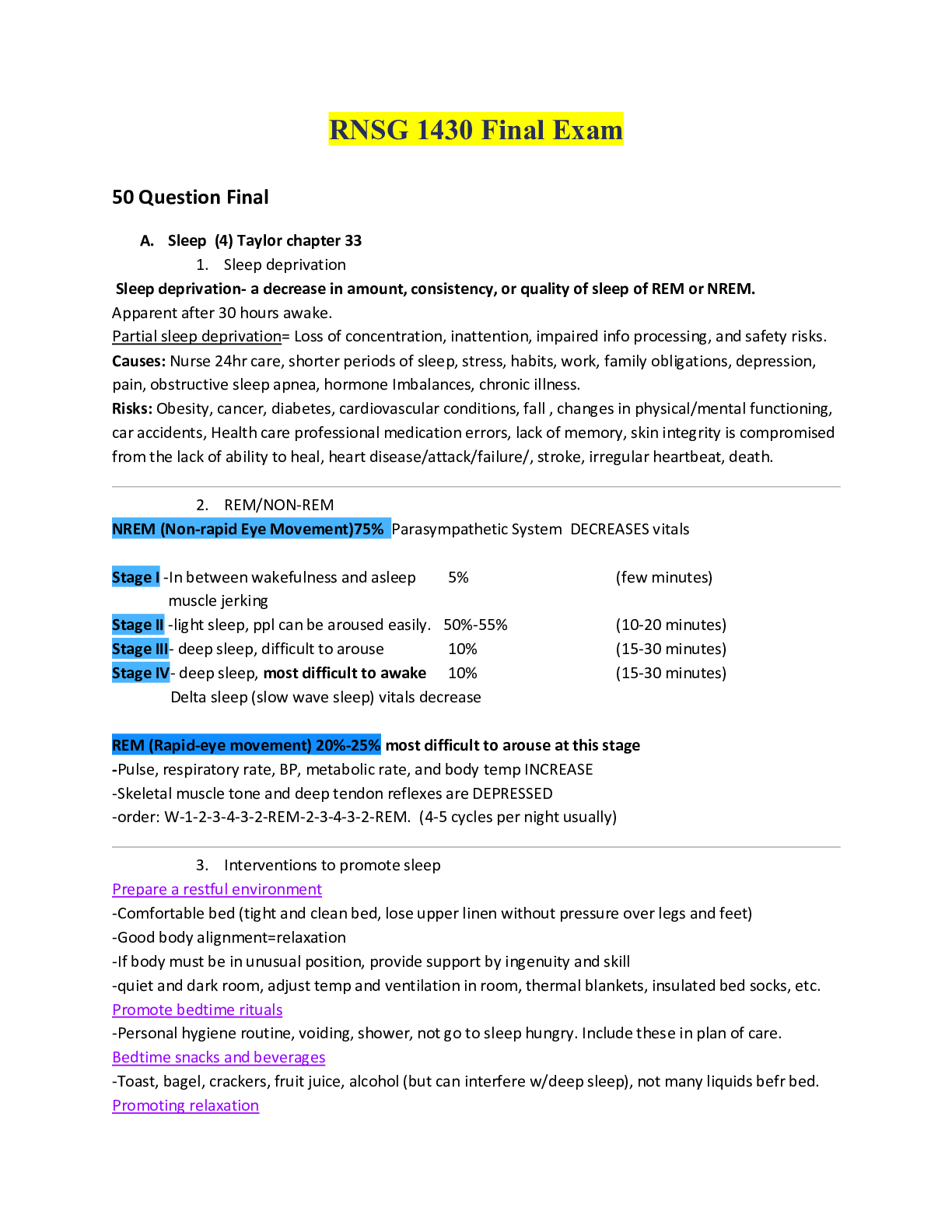
Buy this document to get the full access instantly
Instant Download Access after purchase
Add to cartInstant download
Reviews( 0 )
Document information
Connected school, study & course
About the document
Uploaded On
Nov 06, 2020
Number of pages
21
Written in
Additional information
This document has been written for:
Uploaded
Nov 06, 2020
Downloads
0
Views
77

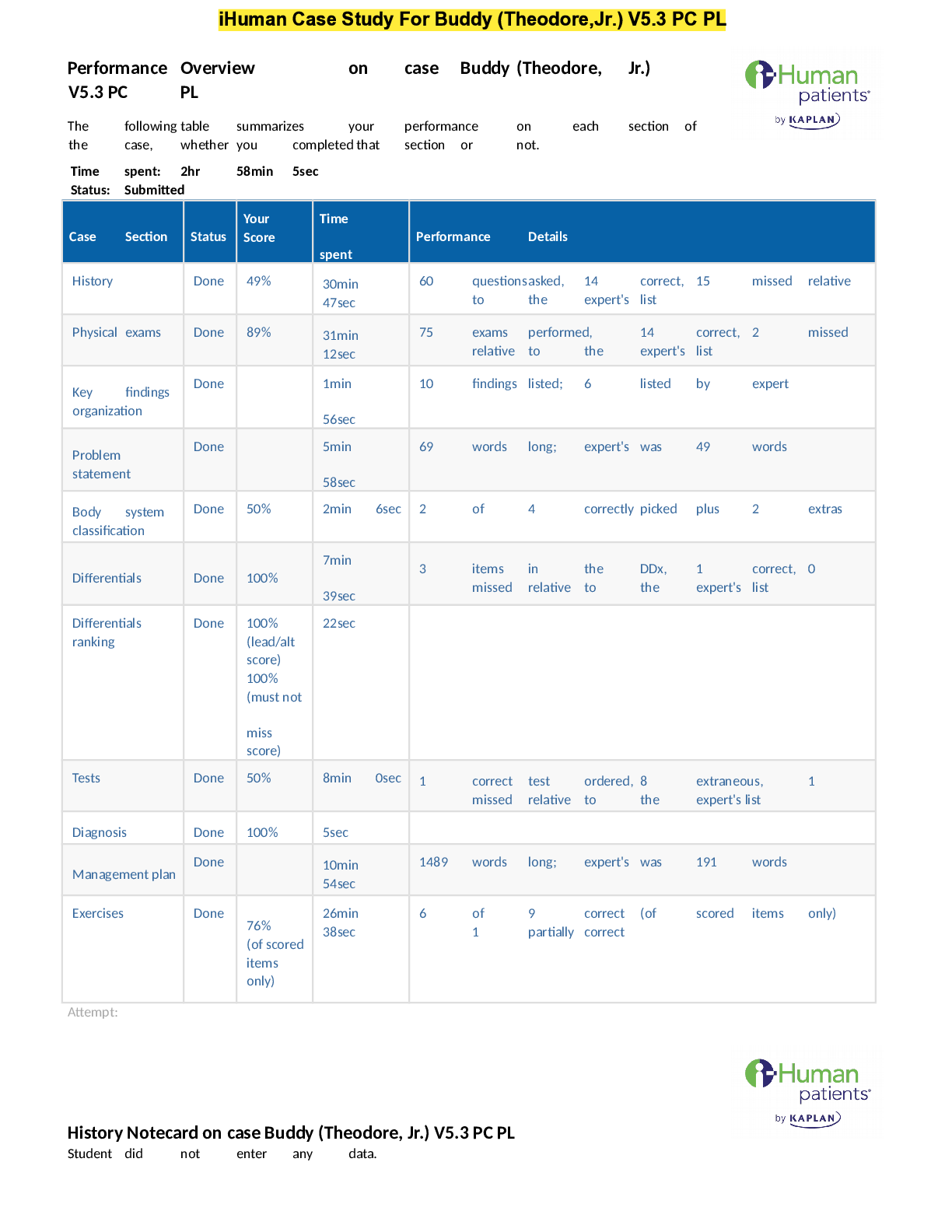
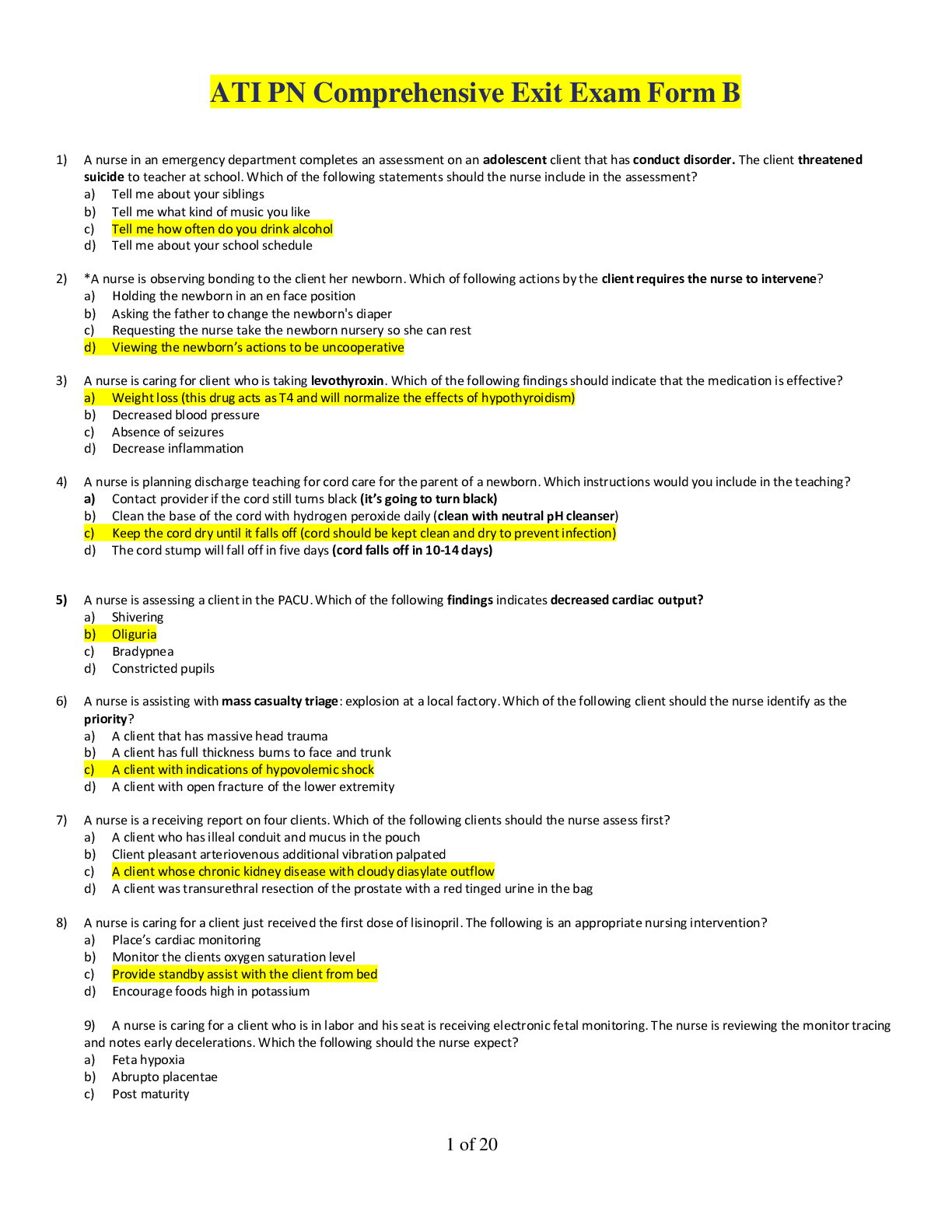
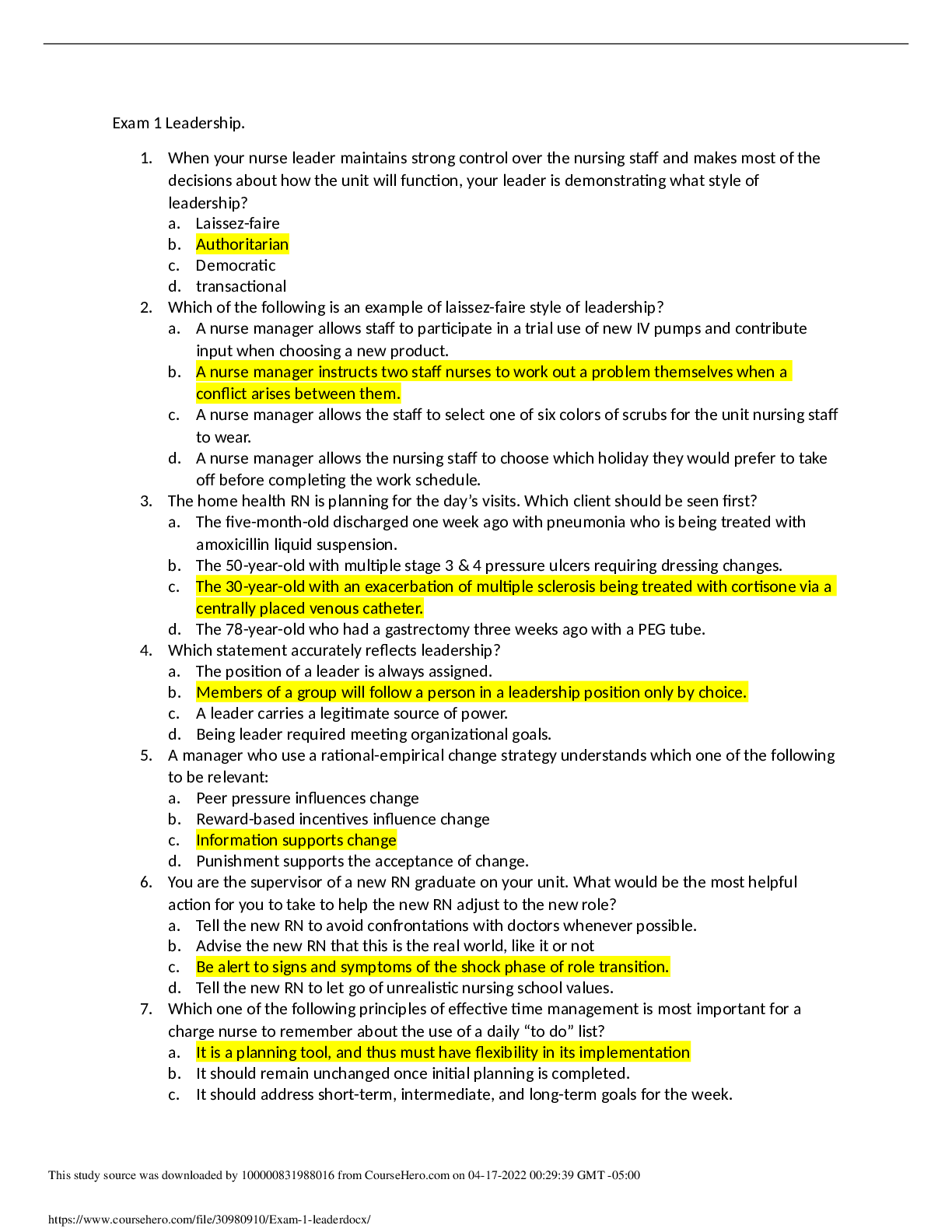


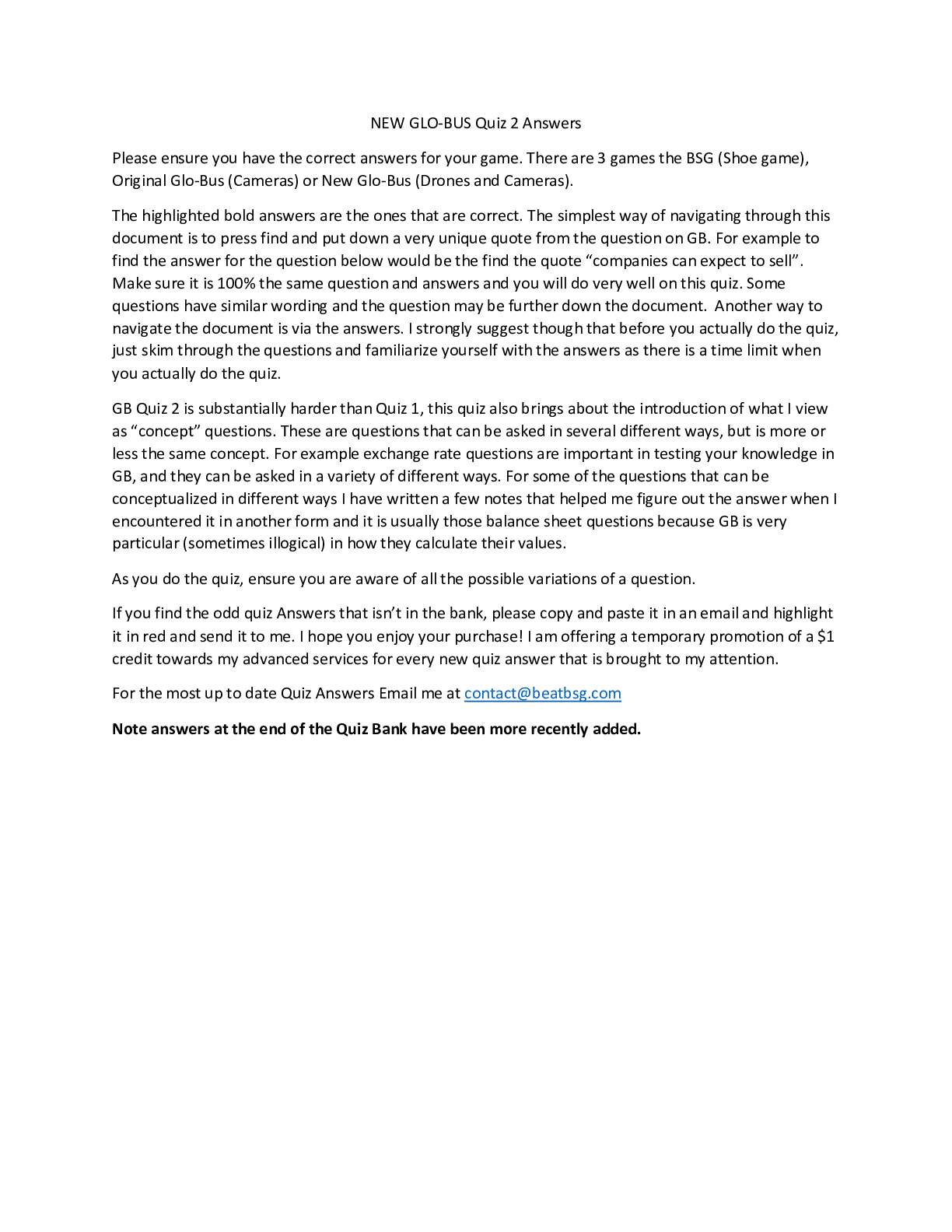
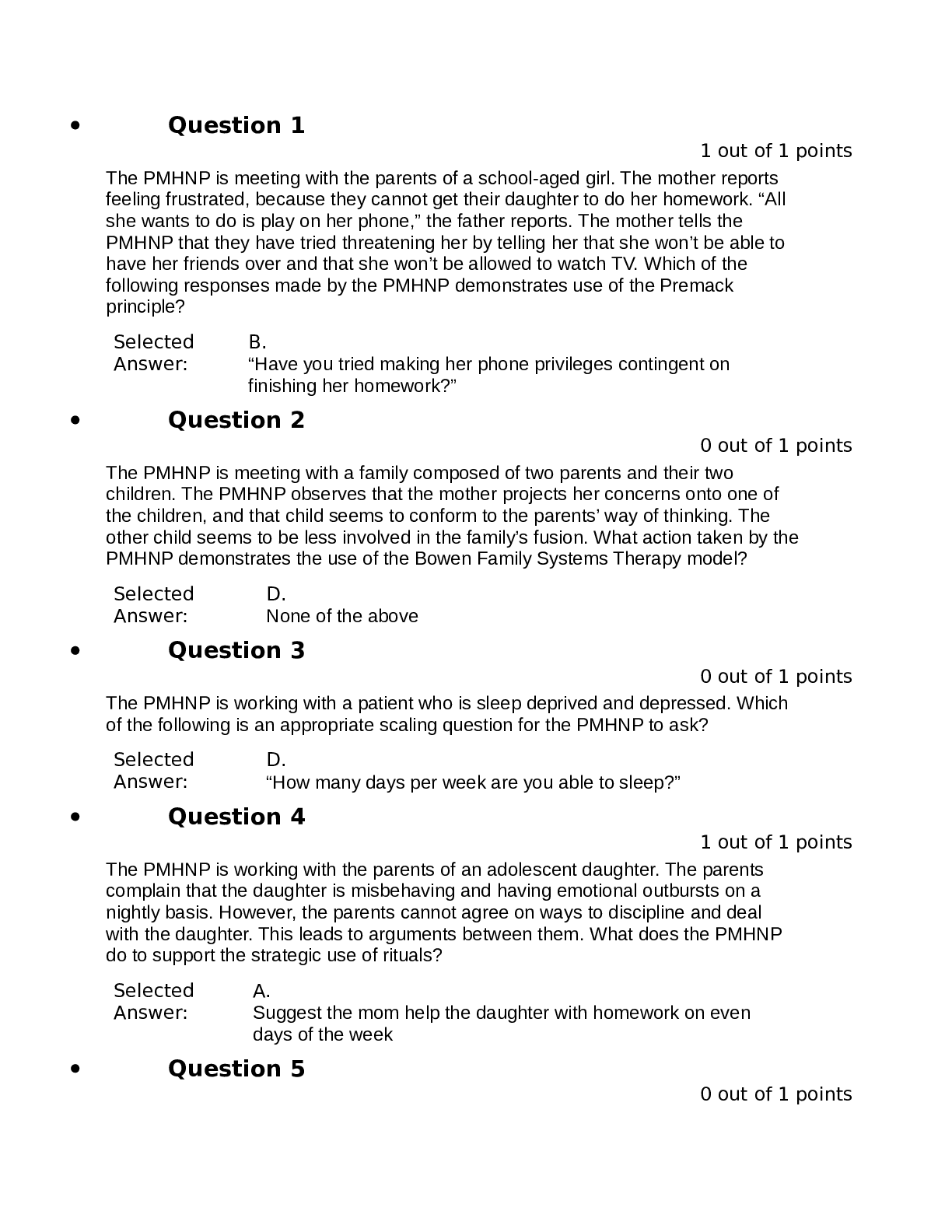
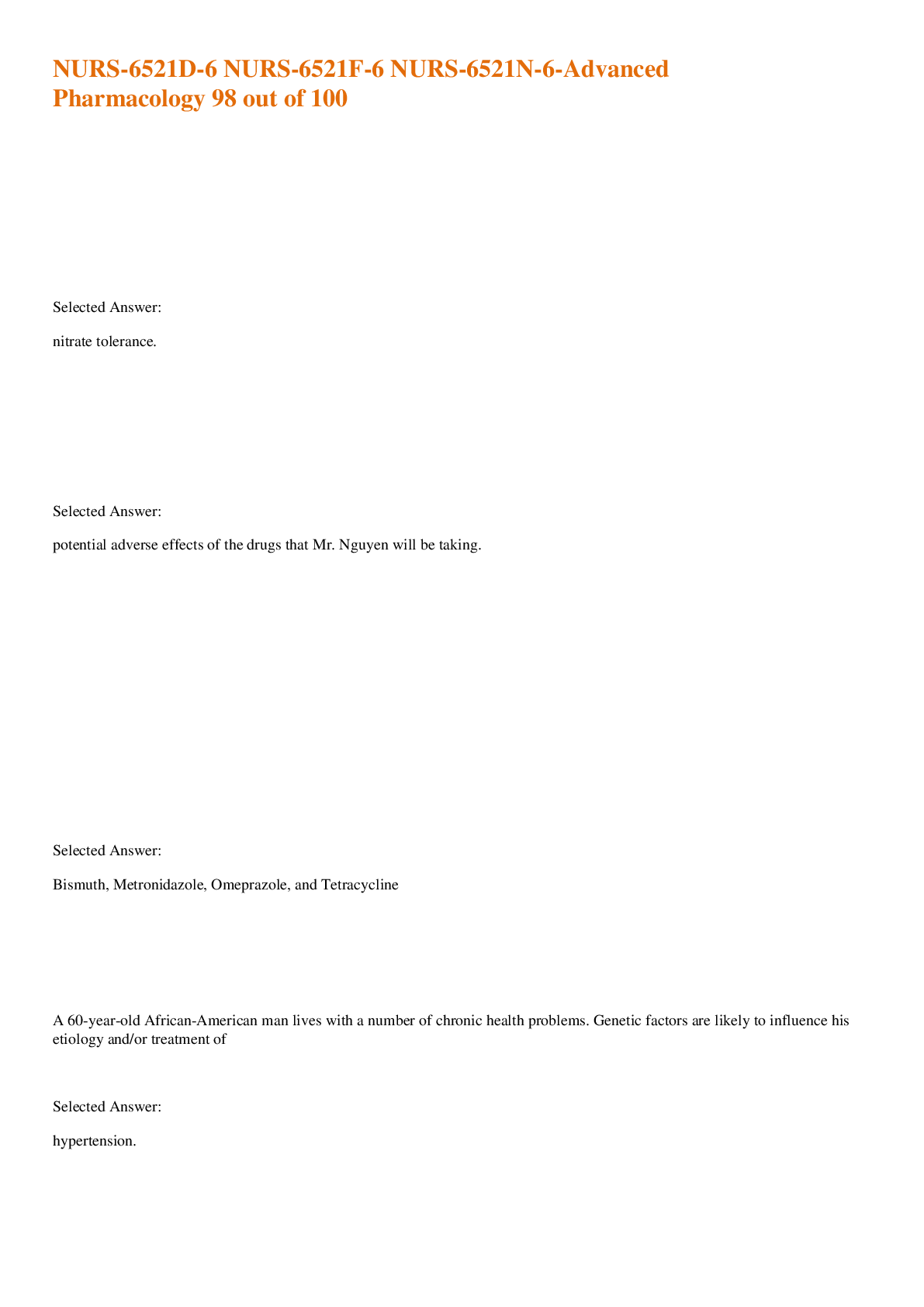
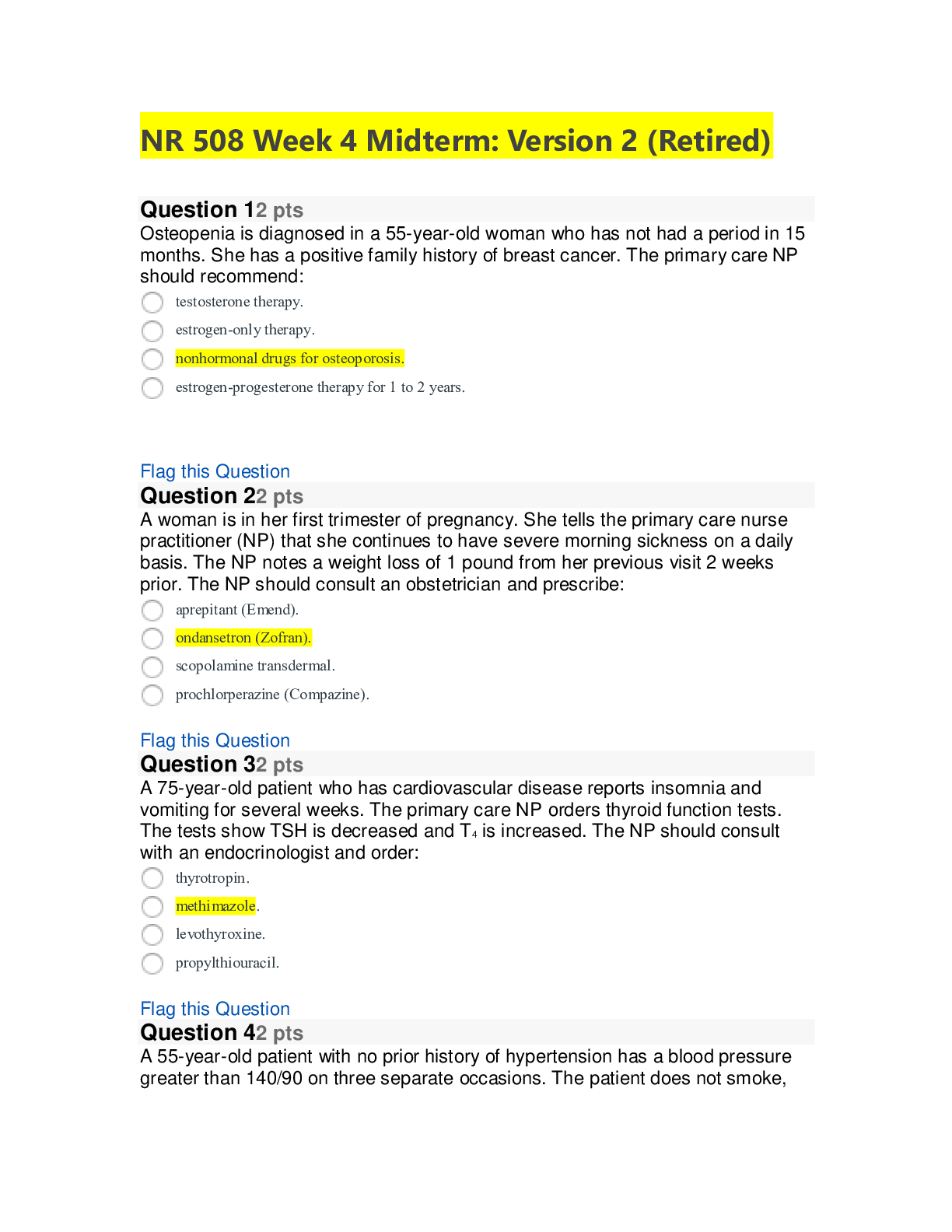



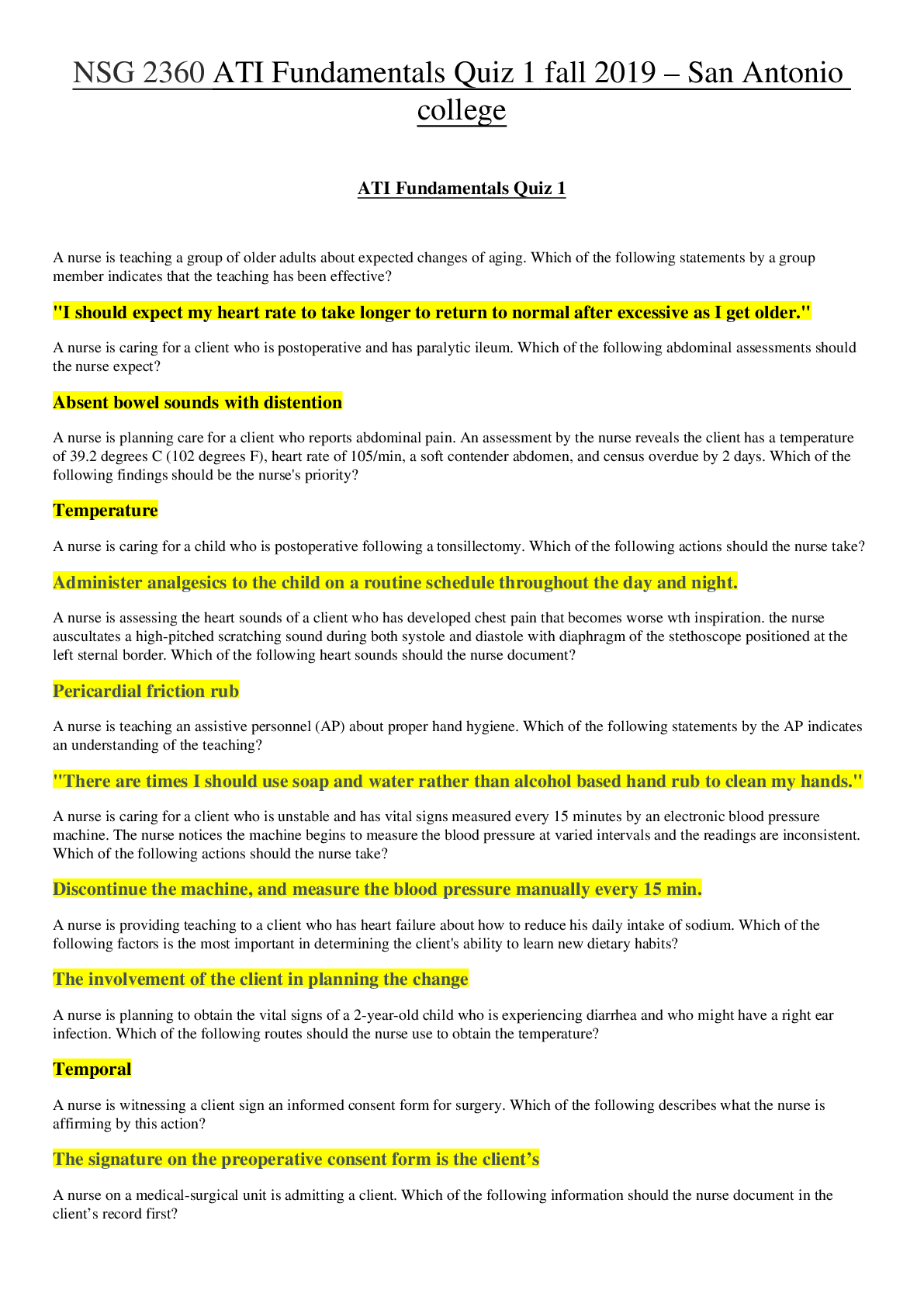

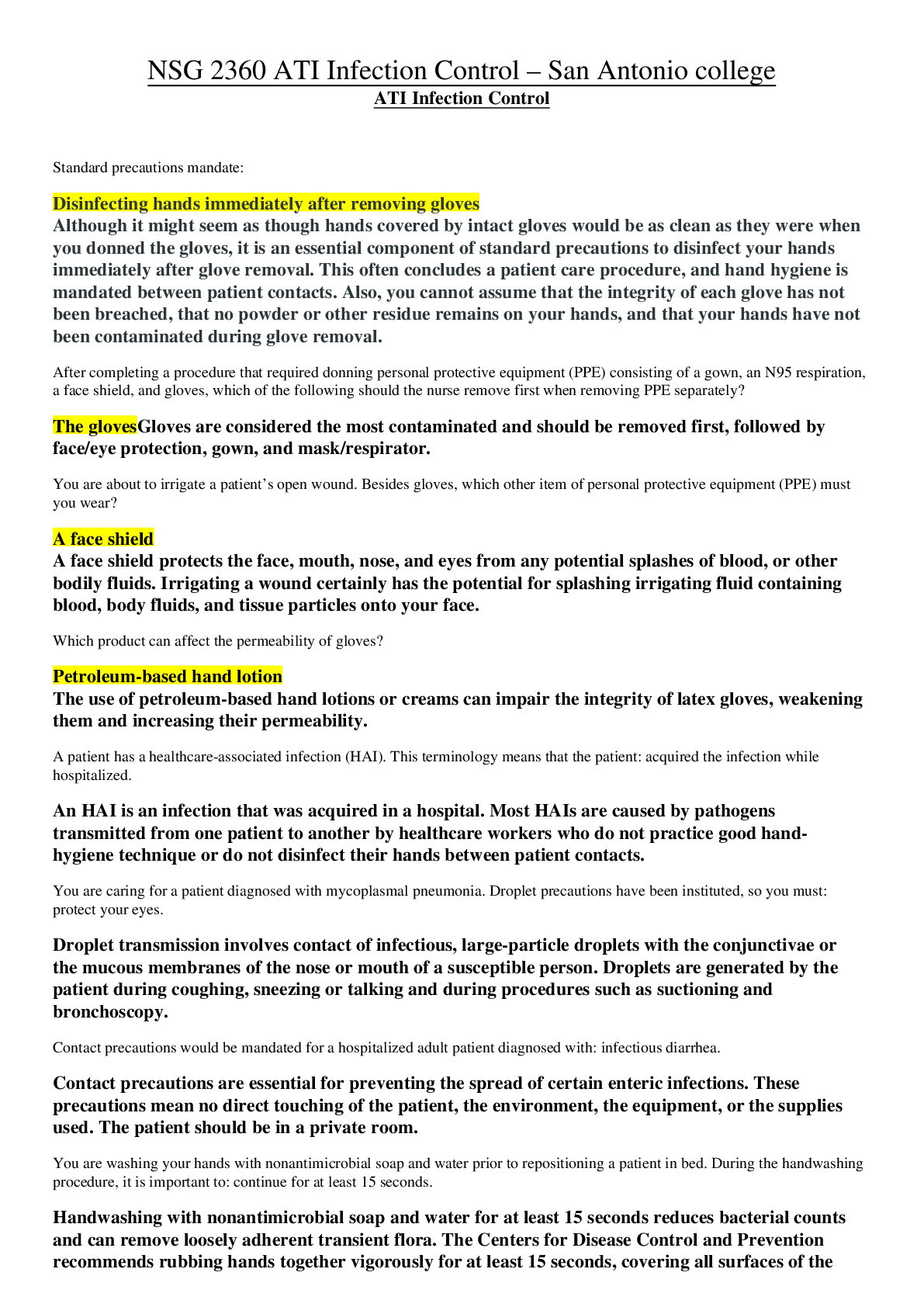
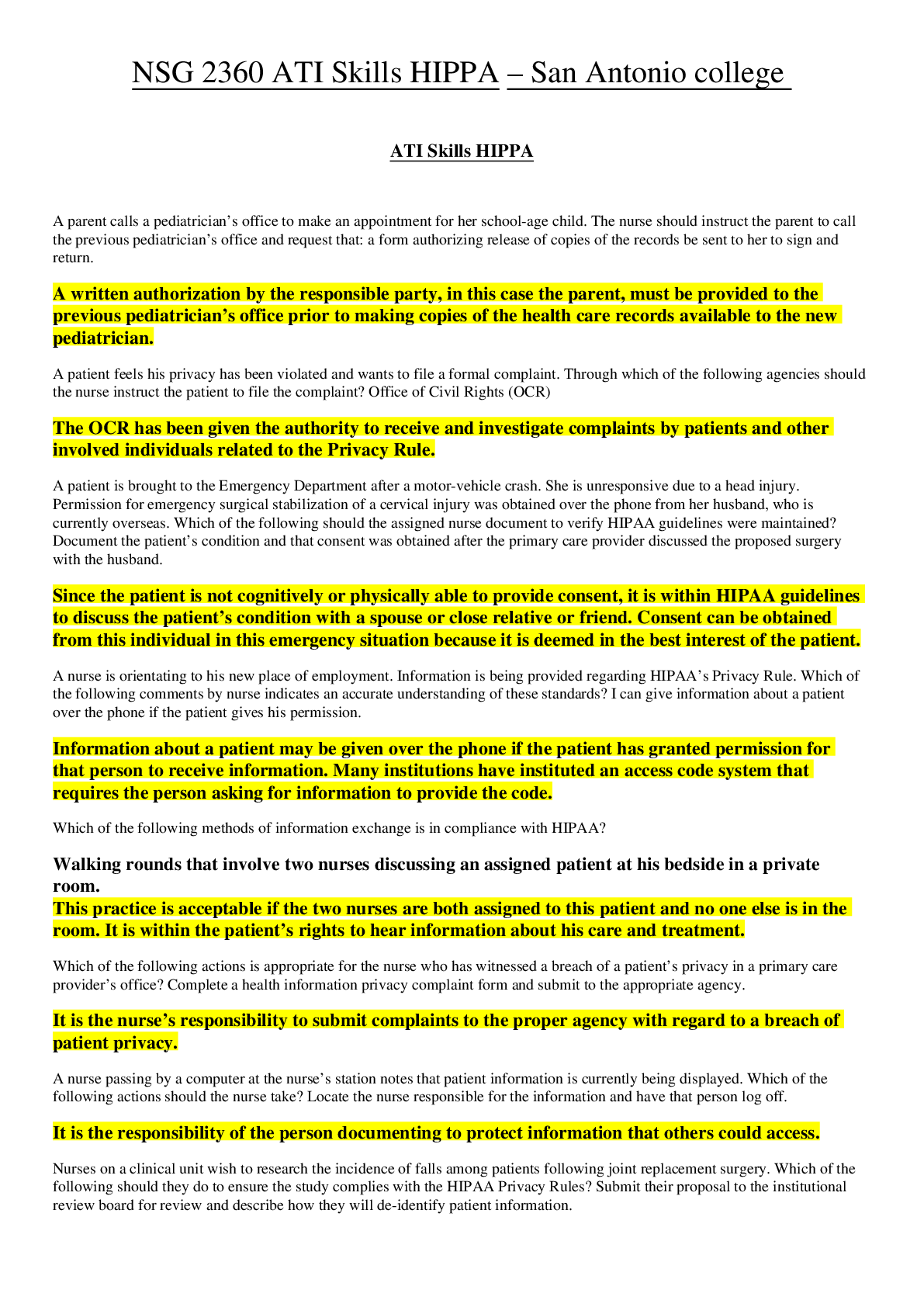
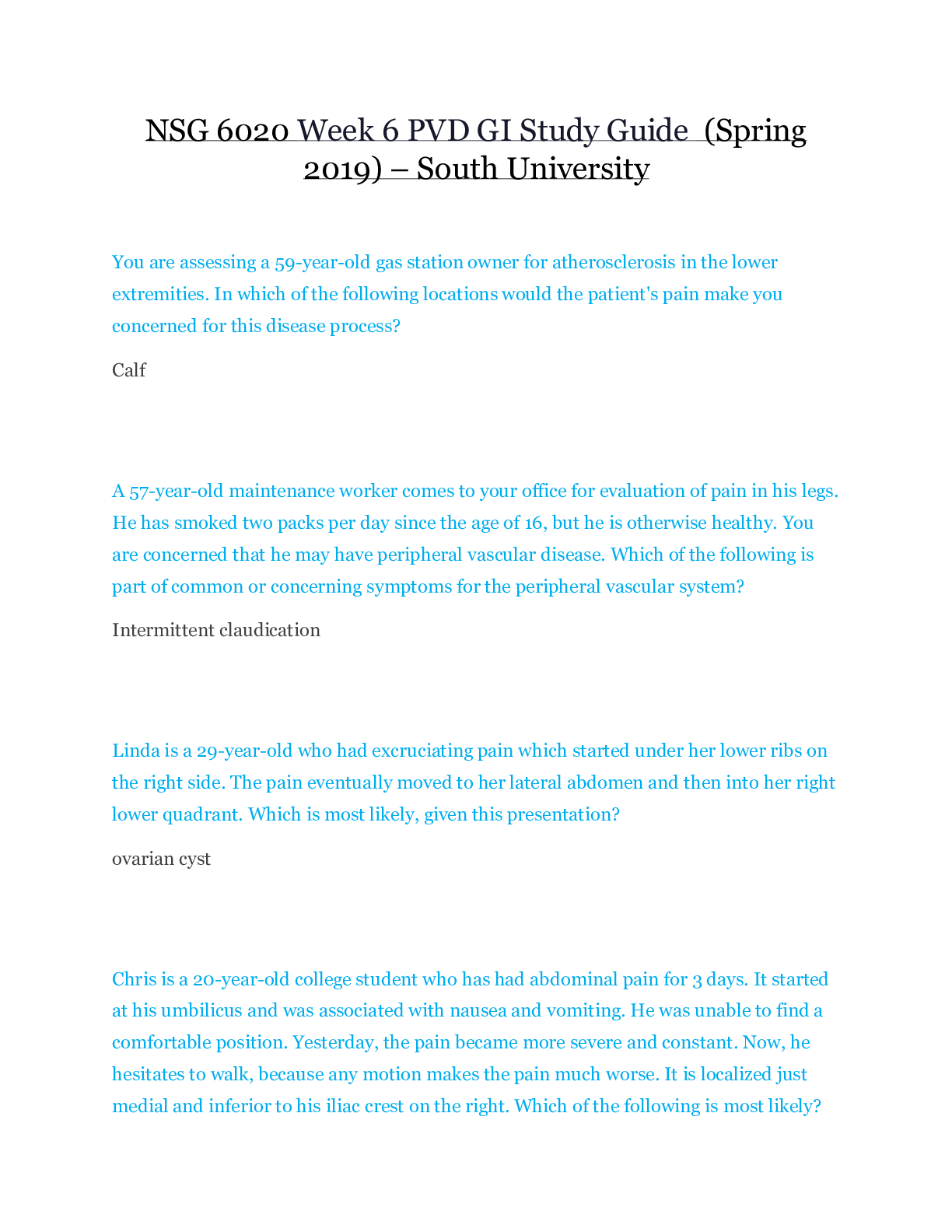
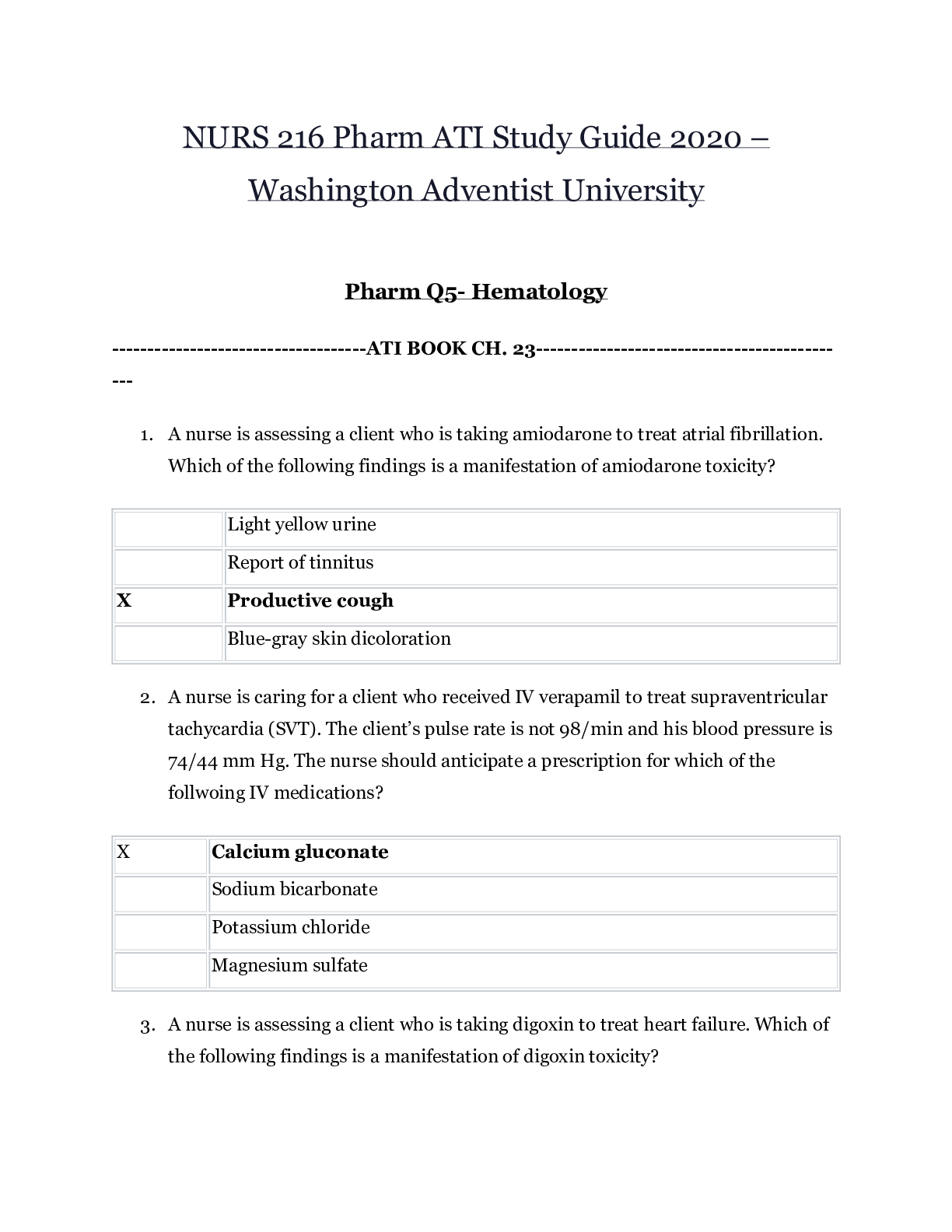
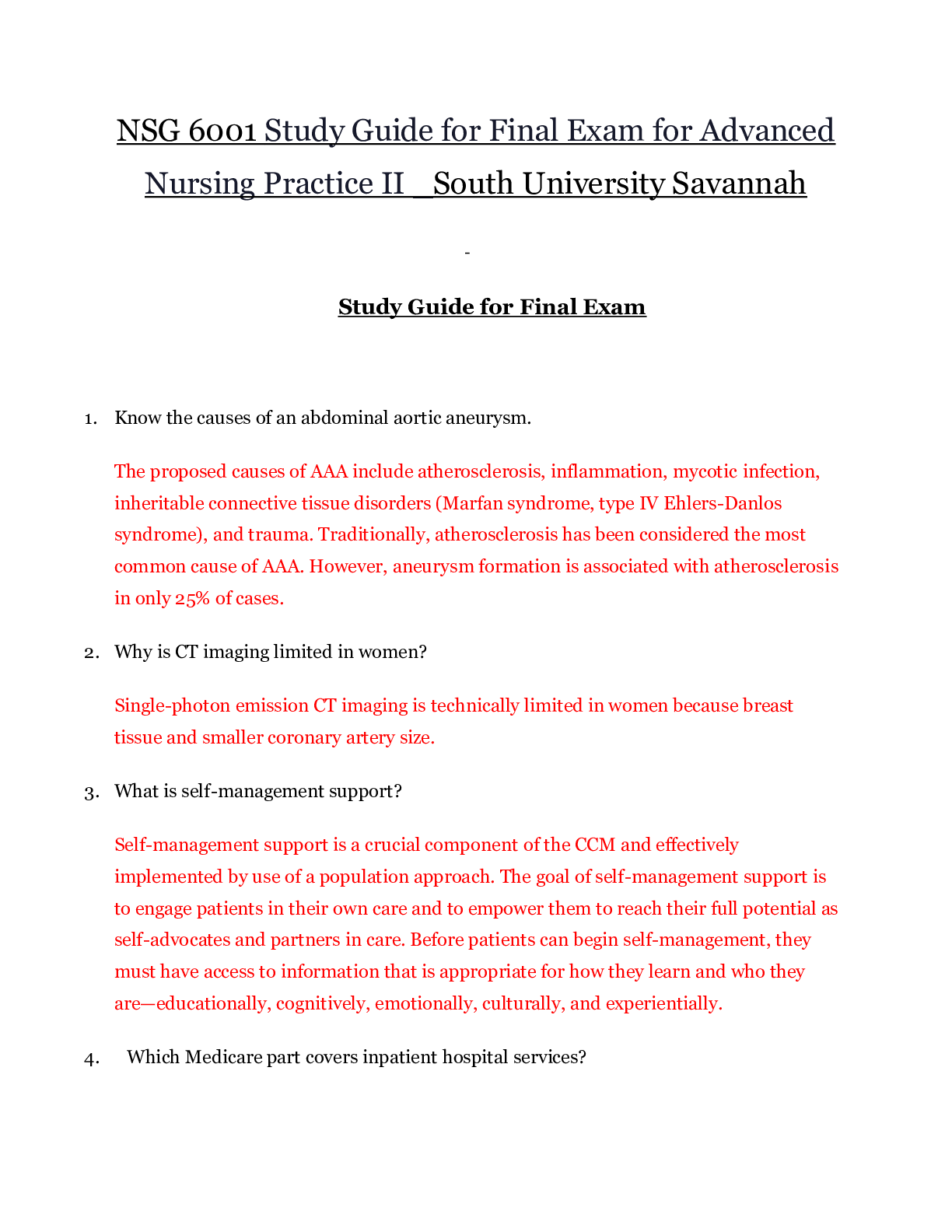
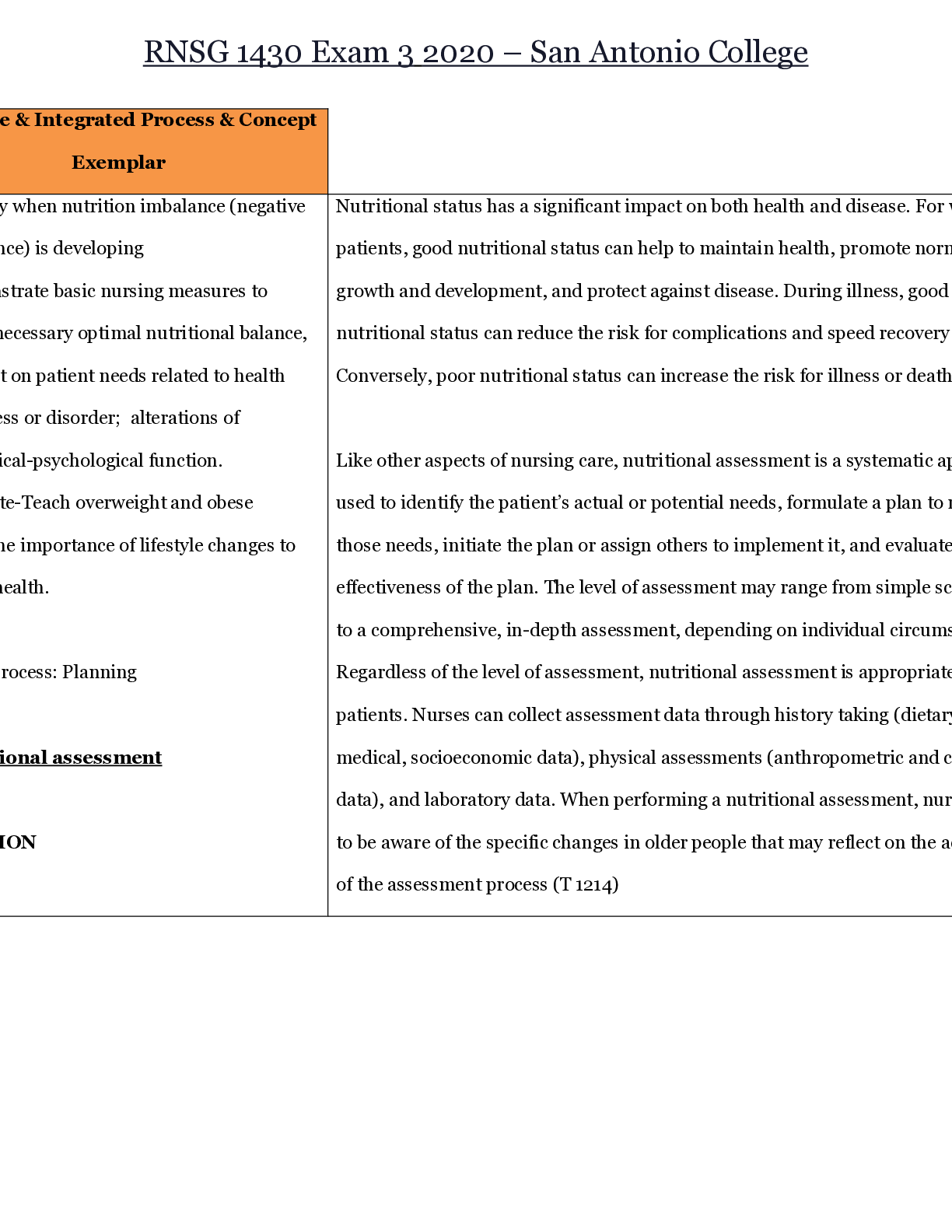

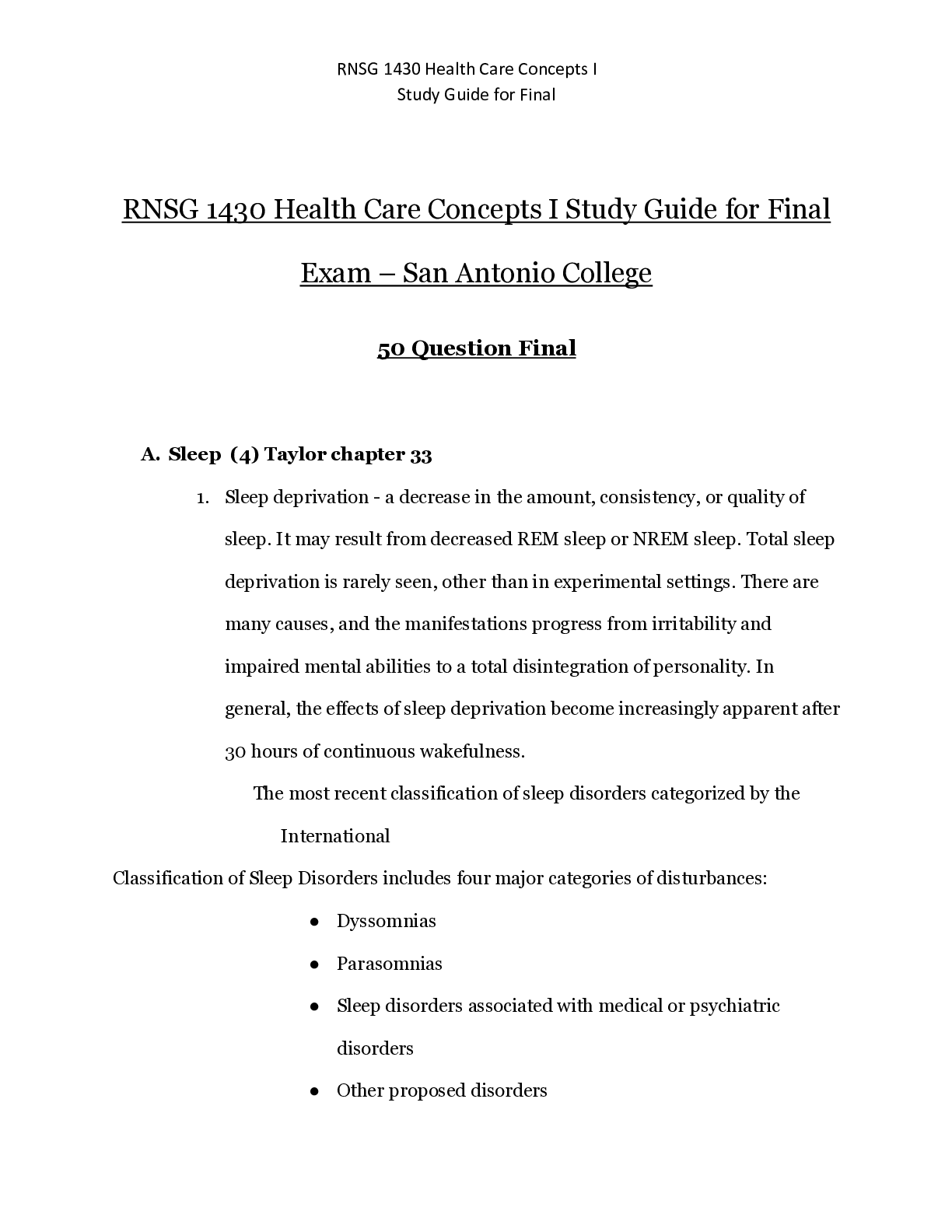
 – San Antonio College.png)
